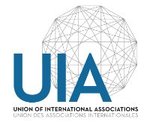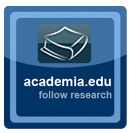Science and Education a New Dimension
Iss. 231. 2020.
А. P. Demartino Countering external information influence: systematizing the Ukrainian experience of counteracting Russian aggression
https://doi.org/10.31174/SEND-HS2020-231VIII39-01
Abstract. The proposed article systematizes the experience of modern Ukraine regarding the confrontation with Russian aggression, which resulted in the annexation of the Autonomous Republic of Crimea and the seizure of part of the Donbass territory. Possibilities and real counteraction of the Ukrainian authorities and the public to the information expansion of the Russian Federation are analyzed. On the basis of understanding of the gained experience, the measures necessary for informational-analytical support of the state administration and development of an adequate strategy in the field of national security of Ukraine are proposed.
Keywords: external information influences, social networks, information war, propaganda, information space, strategic decisions, counteracting misinformation, national security.
А. P. Demartino Countering external information influence: systematizing the Ukrainian experience of counteracting Russian aggression
M. V. Kovalyov Nestor Mahnо's memories «Stormy Youth» as a historical source for studying the author's character and worldview
https://doi.org/10.31174/SEND-HS2020-231VIII39-02
Abstract. This article explores Nestor Mahno’s book “Stormy Youth”, which is an important source for researchers of the history of Russia and Ukraine in the early twentieth century, the theory and practice of anarchism, of views and character of the peasant leader. Some of the stories described by N. Makhno remain unique, others are confirmed by official documents and participants of events, but in general the factual basis and evaluative judgments of the author attest to the significant value of “Stormy Youth” as sufficiently reliable and relatively “fresh” as at the time of appearance (first publication in Paris in 1925), a historical source.
Keywords: historical source, history of Ukraine, Nestor Makhno, memories “Stormy Youth”
M. V. Kovalyov Nestor Mahnо’s memories «Stormy Youth» as a historical source for studying the author’s character and worldview
Z. A. Potikha Cultural and educational activities of community organizations of the Ukrainian diaspora in Canada (1991-2014)
https://doi.org/10.31174/SEND-HS2020-231VIII39-03
Abstract. The article is devoted to the coverage of the cultural and educational activities of community organizations of the Ukrainian diaspora in Canada. An analysis of scientific sources revealed that there are many community organizations in the country that work to preserve and disseminate Ukrainian culture, as well as to intensify relations between the Ukrainian diaspora and Ukraine. The article explores and analyzes the influence of community organizations on the formation of the Canadian Ukrainians as full members of Canadian society.
Keywords: diaspora, Ukrainians of Canada, community organizations, cultural and educational activities.
Z. A. Potikha Cultural and educational activities of community organizations of the Ukrainian diaspora in Canada (1991-2014)
D. O. Belov Immersive comics as a new kind of information product
https://doi.org/10.31174/SEND-HS2020-231VIII39-04
Abstract. The article is devoted to the specifics of comics with “augmented reality”, substantiation of the prospects of using immersive technologies for the formation of comic culture and comic book development as an information product, analysis of augmented reality technologies in general and integration with them comics, study of major trends in creation and development of immersive comics. individual publications that have influenced the development of the use of immersive technologies in comic culture.
Keywords: comics, immersive technologies, information product, augmented reality, immersive comics.
D. O. Belov Immersive comics as a new kind of information product
M. Dotsenko The term “cultural genocide” in the Russian media space: information and manipulation
https://doi.org/10.31174/SEND-HS2020-231VIII39-05
Abstract. The comprehensive analysis of the role of the term “cultural genocide” in the Russian media space has revealed that its use covers information about crimes against Armenians, Uighurs, Tibetans, Abkhazians, indigenous peoples of North America, Ummah, Kurds, Azerbaijanis. Concepts of the content of the recorded material: historical discourse; human rights abuses; history of the victim; destruction of material culture; counteracting the falsification of history; counteracting the crime. The term became an instrument of propaganda in the information war. The designation of this term events in Russia is characterized by manipulation.
Keywords: cultural genocide, media, media space, manipulation, propaganda.
M. Dotsenko The term “cultural genocide” in the Russian media space: information and manipulation
K. Horska A New Test of Artificial Intelligence: Should the Media Industry Be Afraid?
https://doi.org/10.31174/SEND-HS2020-231VIII39-06
Abstract. Artificial Intelligence (AI) technologies assertively reveal their powerful potential in the media completely changing the idea of what the media production can be soon. Tools for editorial processes optimization and production costs reduction are offered to the media industry that is surviving the crisis of business models. Impressive results demonstrated by the products generated using AI force us to not only revise fundamental principles of the industry’s work but also call into question the society’s need for profession of a journalist. The presented study is intended to review examples of AI integration in the media and identify benefits and threats of those innovations from the standpoint of journalists themselves, as well as assess how dramatically those processes can change the balance of forces of humans vs AI.
Keywords: artificial intelligence (AI), media industry, digital journalism, fake news, data journalism.
K. Horska A New Test of Artificial Intelligence: Should the Media Industry Be Afraid?
T. S. Leontyeva Evaluation of reading elevators: educational content
https://doi.org/10.31174/SEND-HS2020-231VIII39-07
The article deals with the key features of the functional characteristics of reading lifting in educational communication practice as a basis for training modules. This combination of communication and teaching techniques provides good opportunities for identifying and analyzing social and communication challenges and creates broad communication perspectives that are created by the elevator for reading. The scientific argumentation of the proofs that the social-communication and teaching-teaching methods offered in practice have a positive impact on the development of reading and communication skills in general in the student and student audience is offered. This means that reading lifting techniques, presented in close connection with teaching practice, not only develop the reliability of empirically substantiated arguments, but also represent the effectiveness of the methodology presented to the teaching audience. A reading elevator should be considered as one of the communication problems that must be consistent with a science- based teaching methodology. When it comes to the technology of presenting research, it should be emphasized that such a technique is often used to balance the quality combination of well-known material and novelty with the possible implementation of novelty directly in the teaching audience. The correlation of different types of contexts is placed within the texts in such a way as to develop the motivation of the student and student audience.
Keywords: audience, communication, content, elevator, module, reading, text.
T. S. Leontyeva Evaluation of reading elevators: educational content
I. S. Melnychenko, V. O. Zakharchuk The implementation of blame tactics through the signs of verbal aggression in political discourse
https://doi.org/10.31174/SEND-HS2020-231VIII39-08
Abstract. The article is devoted to the study of the peculiarities of the implementation of blame tactics in English-language political discourse, which is characterized by the demonstration of dominance over the opponent, which in many cases is implemented through verbal aggression. The article examines the language signs used for the implementation of the blame tactics, which results in the humiliation of the opponent, the lowering of his political status and the narrowing of his discursive space.
Keywords: political discourse, blame tactics, verbal aggression, signs of verbal aggression.
I. S. Melnychenko, V. O. Zakharchuk The implementation of blame tactics through the signs of verbal aggression in political discourse
A. Motko The contribution of the Ukrainian Library Association in the formation of modern library education in Ukraine
https://doi.org/10.31174/SEND-HS2020-231VIII39-09
Abstract. The article analyzes the contribution of the Ukrainian Library Association in the formation of modern library education in Ukraine and highlights its priority areas in the field of education. As a result, it was found that the Ukrainian Library Association, as from the beginning of its existence was closely associated with professional education, and today continues to make a significant contribution to the development of library education in Ukraine. It is emphasized that one of the priority activities of the association today is the development of continuing education and increasing the prestige of Ukrainian book collections.
Keywords: Association, ULA, Ukrainian Library Association, Continuing Education, Main Training Center (MTC).
A. Motko The contribution of the Ukrainian Library Association in the formation of modern library education in Ukraine
N. Mykhayliv A notion and structure of the aim of women’s magazines (on the example of “Vogue” and “Harper’s Bazaar” (USA)
https://doi.org/10.31174/SEND-HS2020-231VIII39-10
Abstract. In the article scientific approaches to understanding of the notion of the aim of the mass media has been analyzed, the author’s classification of the aim of mass media has been worked out, the structure of the aim of the mass media has been built up, the correlation of its elements has been determined and the author’s classification of the results of the mass media has been proposed. The theory of the aim of the mass media has been applied to the research of the aim of women’s papers “Vogue” and “Harpes’s Bazaar”, the declarative and the implicit aim of the papers has been elucidated; it has been founded out that along with the cultural aim the magazines also put for themselves the aim of political and social influence, the future results of these aims has been ascertained.
Keywords: aim of mass media, declarative aim, implicit aim, expedient action, author’s intension, future result.
N. Mykhayliv A notion and structure of the aim of women’s magazines (on the example of “Vogue” and “Harper’s Bazaar” (USA)
I. V. Myslovskyi Addressing terrorism perspectives in journalist education. From acknowledging the gaps in education to successfully plugging them
https://doi.org/10.31174/SEND-HS2020-231VIII39-11
Abstract. The article stresses on the necessity of integrating terrorism subject into journalist education in Ukraine. Having been a part of media agenda setting for years, terrorism is still often covered unprofessionally by journalists whose understanding and perception of the phenomenon are full of stereotypes and media frames. Journalists call education the main determinant of their distorted vision of terrorism, but there is still no relevant courses at Ukrainian universities to improve the situation. Applying the method of polysubjective interview, the author outlines the principles of media discipline about terrorism and gives recommendations to how implement the course according to student specialisations and interests.
Keywords: media, terrorism, education, journalist, media literacy, media studies.
I. V. Myslovskyi Addressing terrorism perspectives in journalist education. From acknowledging the gaps in education to successfully plugging them
K. O. Nazarenko Fake news proliferation struggle: content verification digital tools
https://doi.org/10.31174/SEND-HS2020-231VIII39-12
Abstract. The article discusses the methods and tools of content verification. Emphasis is placed on new services and systems that are able to provide true data or identify fragments of distorted information in media content, described tools involving artificial intelligence. There are 3 groups of content verification tools that are available not only to journalists but also to the ordinary reader.
Keywords: fake news, verification of information, factchecking, digital resources, artificial intelligence, deep fakes.
K. O. Nazarenko Fake news proliferation struggle: content verification digital tools
I. S. Putsiata Manipulative technologies in the lighting of the coronavirus pandemic on all-ukrainian tv channels
https://doi.org/10.31174/SEND-HS2020-231VIII39-13
Abstract. The article analyzes all-Ukrainian TV channels in the context of their use of basic technologies of the linguistic manipulation. The main attention is paid to manipulative techniques and receptions in the media during the coverage of the coronavirus pandemic. Attention is drawn to the fact that psychological technologies on television are now widespread. The author concludes that television propaganda manipulatively interprets events about the coronavirus, biased comments on them, using certain “labels” of emotionally negative color to denote people, events, phenomena; hides or distorts unfavorable information, in particular, decorating it with a large number of different comments, hypotheses, conspiracy theories.
Keywords: manipulation, linguistic manipulation, coronavirus pandemic, technologies.
I. S. Putsiata Manipulative technologies in the lighting of the coronavirus pandemic on all-ukrainian tv channels
T. I. Sashсhuk Features of communication of Ukrainian writers in the social network «Facebook»
https://doi.org/10.31174/SEND-HS2020-231VIII39-14
Summary: The article highlights the peculiarities of communication between Ukrainian writers and readers on the personal pages of the former in «Facebook» – the most popular social network in Ukraine. The object of the research is the «Facebook» pages of two authors, who are at the same time writers, scientists and university professors. While analysing a social media post as a main genre of social networks (using the example of FB-pages of writers) its classification is specified and expanded. The article also highlights the stylistic features of both author’s writings, which be echoed in their posts and comments.
Keywords: communication in «Facebook», personal page in «Facebook», genres of social networks, author-writer, post, comment.
T. I. Sashсhuk Features of communication of Ukrainian writers in the social network «Facebook»
O. Dziuba Geographical distribution of events in the Ukrainian media discourse on Muslims: othering mechanisms
https://doi.org/10.31174/SEND-HS2020-231VIII39-15
Abstract. Geographical distribution of media coverage on Muslims-related events is connected to their symbolic position. The main aim of the paper is to discuss a procedure for the discourse analysis quantitative stage, as well as to present the geographical analysis results of a study of the Ukrainian press discourse on Muslims. The empirical basis of the paper is a corpus of over 4 000 articles published in the Uriadovy Kurier, Dzerkalo Tyzhnia, Radio Svoboda Ukraina, Segodnia and Vesti from 2010 to 2018.
Keywords: Muslims, quantitative stage of discourse analysis, othering mechanisms, geographical distribution, Ukrainian press.
O. Dziuba Geographical distribution of events in the Ukrainian media discourse on Muslims: othering mechanisms
A. T. Knyazyan Perceptions of the Roles of Men and Women in Society
https://doi.org/10.31174/SEND-HS2020-231VIII39-16
Abstract. Gender is one of the important categories of social life, manifested in everyday reality. Representatives of one gender are presented with a special set of behavioral norms and expectations, significantly different from the requirements for the other sex. Social ideas about men and women relate to the norms of their social behavior and psychological qualities. The division of society on the basis of sex led to the appearance of two opposing attitudes towards men and women, which determine their specific features. The specificity of the gender system lies in the fact that it is an integral characteristic of any society, since any society regulates the relations between the sexes.
A. T. Knyazyan Perceptions of the Roles of Men and Women in Society
R. R. Myshok, L. D. Klymanska The role of civic education in the socio-political internet behavior realization of Ukrainian youth
https://doi.org/10.31174/SEND-HS2020-231VIII39-17
Abstract. The article examines socio-political internet practices as a form of civic behavior. It is noted that this kind of behavior is already being implemented by Ukrainian citizens, but in such a way and at such a level that it does not fulfill its basic functions – to help regulate the problems of society. One of the reasons for this situation is the poor state of civic education in Ukraine, which has a negative impact not only on socio-political internet practices, but on civic activity as a whole.
Keywords: civic education, competence, e-democracy, civic activism, socio-political internet behavior.
R. R. Myshok, L. D. Klymanska The role of civic education in the socio-political internet behavior realization of Ukrainian youth
S. S. Yaremchuk The theory of religious complexity in the modern study of religion
https://doi.org/10.31174/SEND-HS2020-231VIII39-18
Abstract. The article analyzes the prerequisites, methodology and basic ideas of the theory of religious complexity. It is the result of a large-scale research project by scholars to study the role of religion in the public sphere in five Nordic countries. This concept indicates the simultaneous presence of several, sometimes contradictory, religious tendencies that can coexist at different levels of society. It can be argued that the theory of religious complexity is a component of the post-secular discourse of the analysis of religion, which includes the theories of P. Berger, J. Casanova, J. Habermas, and others.
Keywords: religion, religious complexity, secularization, deprivatization, Nordic countries.
S. S. Yaremchuk The theory of religious complexity in the modern study of religion







